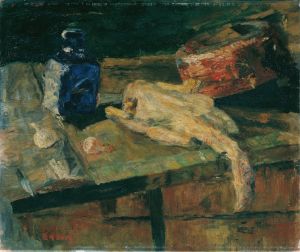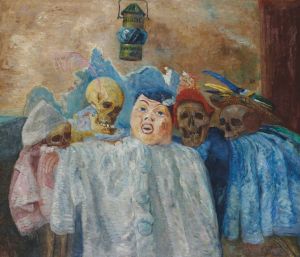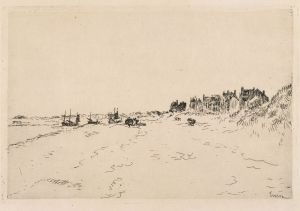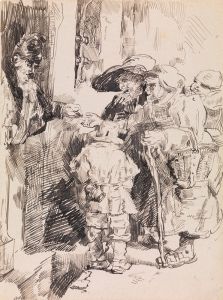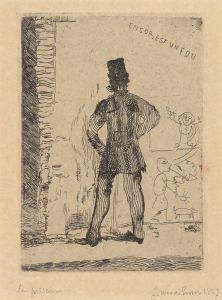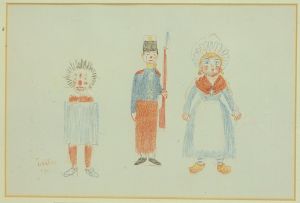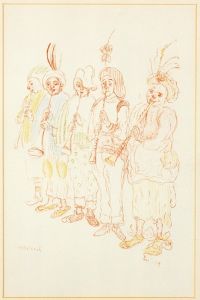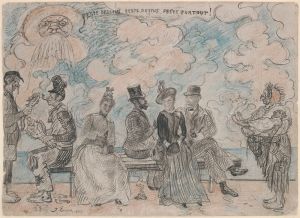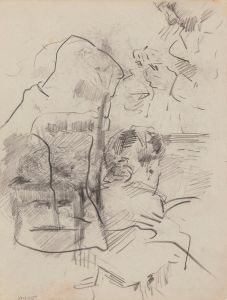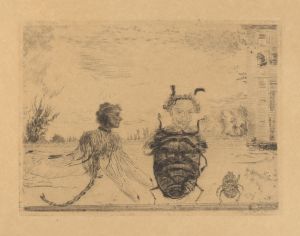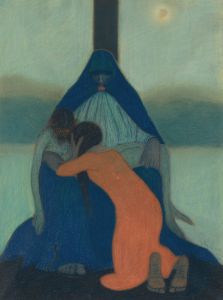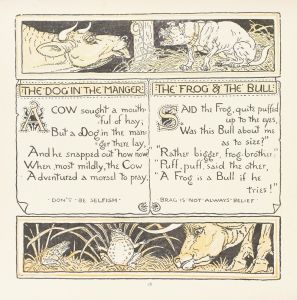
Sloth
A hand-painted replica of James Ensor’s masterpiece Sloth, meticulously crafted by professional artists to capture the true essence of the original. Each piece is created with museum-quality canvas and rare mineral pigments, carefully painted by experienced artists with delicate brushstrokes and rich, layered colors to perfectly recreate the texture of the original artwork. Unlike machine-printed reproductions, this hand-painted version brings the painting to life, infused with the artist’s emotions and skill in every stroke. Whether for personal collection or home decoration, it instantly elevates the artistic atmosphere of any space.
James Ensor, a Belgian painter and printmaker, is known for his unique and often provocative works that delve into themes of existentialism, satire, and the grotesque. One of his notable works is "Sloth," which is part of a series of paintings representing the Seven Deadly Sins. Ensor's interpretation of these sins is marked by his distinctive style, characterized by vivid colors, intricate details, and a blend of realism and fantasy.
"Sloth" by James Ensor was created during a period when the artist was deeply engaged with exploring human vices and virtues through his art. Ensor's approach to depicting sloth, traditionally understood as laziness or a lack of effort, is both imaginative and critical. His work often reflects a deep skepticism of societal norms and human behavior, and "Sloth" is no exception.
In "Sloth," Ensor employs his signature use of vibrant colors and chaotic composition to convey the essence of the sin. The painting is filled with symbolic imagery that reflects the lethargy and stagnation associated with sloth. Ensor's use of masks and skeletons, recurring motifs in his work, adds a layer of surrealism and underscores the theme of mortality and the futility of idleness. These elements are typical of Ensor's style, which often blurs the line between reality and fantasy, inviting viewers to ponder deeper philosophical questions.
Ensor's work is heavily influenced by his surroundings and personal experiences. Born in Ostend, Belgium, in 1860, he spent much of his life in this coastal city, which was a significant source of inspiration for his art. The carnival-like atmosphere of Ostend, with its bustling streets and vibrant characters, is reflected in the lively and sometimes chaotic scenes depicted in his paintings. This influence is evident in "Sloth," where the dynamic composition and vivid imagery capture the viewer's attention and provoke contemplation.
Throughout his career, Ensor was associated with the avant-garde movement, and his work often challenged conventional artistic norms. He was a member of the artistic group Les XX, which was known for its progressive approach to art and its rejection of traditional academic standards. Ensor's innovative techniques and bold subject matter earned him both praise and criticism during his lifetime, but he remained committed to his unique vision.
"Sloth" exemplifies Ensor's ability to blend humor and horror, creating a work that is both entertaining and thought-provoking. His use of allegory and symbolism invites viewers to reflect on the nature of sloth and its implications in their own lives. Ensor's exploration of the Seven Deadly Sins, including "Sloth," highlights his fascination with the darker aspects of human nature and his desire to provoke introspection and dialogue.
Today, James Ensor is celebrated as a pioneering figure in modern art, and his works, including "Sloth," continue to captivate audiences with their originality and depth. His paintings are housed in major museums and collections worldwide, where they are appreciated for their innovative style and enduring relevance. Through "Sloth," Ensor offers a timeless commentary on human behavior, encouraging viewers to confront their own vices and virtues.





